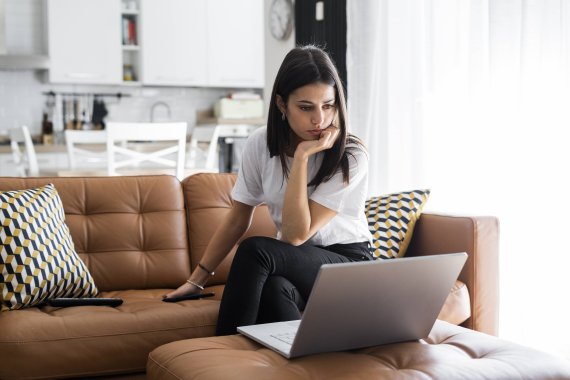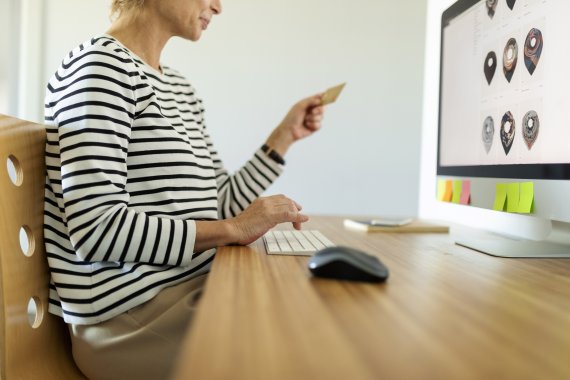
El tema del trabajo desde casa existe desde hace más de un año y en el futuro será cada vez más importante. Por eso es tan importante crear las condiciones óptimas para trabajar desde casa de forma saludable y eficaz. Después de todo, lo que a primera vista parece un alivio para los empleados puede convertirse en realidad en algo poco saludable si se adopta el comportamiento equivocado.
En 2019, la AOK publicó un estudio en el que el 73,4% de quienes trabajan frecuentemente desde casa se describían a sí mismos como agotados. Entre los que solo trabajan en la oficina, el 66% dijo lo mismo.
La proporción de empleados que se quejaban de enfado y fastidio o de nerviosismo e irritabilidad también era mayor en la oficina en casa que entre los trabajadores de oficina.
Trabajar desde casa durante semanas enteras también suele significar falta de ejercicio: no hay desplazamiento al trabajo, los gimnasios cierran en época de coronavirus, al igual que las piscinas, los clubes deportivos y los campos de deporte.
Por eso es tan importante organizar las horas de trabajo en la oficina doméstica de la forma más saludable posible y garantizar un equilibrio sano. ISPO.com ofrece consejos para trabajar desde casa de forma saludable y eficaz.
¿Trabajar desde el sofá o incluso la cama? Puede ser un tópico para los escépticos de la oficina en casa, pero es la solución más insalubre imaginable. En lugar de sentarse en el regazo o en una mesa de centro demasiado baja, lo ideal es instalar el puesto de trabajo en un estudio, pero si no, al menos en una zona de trabajo con escritorio propio.
La separación espacial del trabajo y la vida privada ayuda a concentrarse durante las horas de trabajo y a despreocuparse del trabajo después de trabajar. Esto último es un problema muy extendido en la oficina en casa. El estudio de la AOK de 2019 encontró que el 38,3% de todas las personas que trabajan desde casa tenían dificultades para desconectar adecuadamente después del trabajo. Entre los trabajadores de oficina, el 24,9% tenía este problema.
"La frontera entre el trabajo y la vida privada se vuelve más borrosa cuando se trabaja desde casa", dijo Helmut Schröder, del Instituto Científico de la AOK (WidO). "Esto aumenta el riesgo de que se reduzcan las fases de recuperación".

La posición óptima para sentarse permite ver relajadamente la pantalla desde arriba a una distancia de 50 a 70 cm. La cabeza debe estar ligeramente baja cuando se mira al monitor para evitar tensiones en la zona del cuello.
Una silla de oficina con respaldo y reposabrazos regulables también garantiza una postura ergonómica. Cambiar regularmente de postura al sentarse alivia el esfuerzo y evita tensiones en la espalda. En este caso es válido lo siguiente: la siguiente postura sentada es siempre la mejor.
Los convertibles y los portátiles son prácticos, pero en ningún caso ideales para el trabajo a largo plazo. Mirar constantemente pantallas a menudo demasiado pequeñas y con poco contraste provoca sequedad ocular, propensión a las infecciones, dolores de cabeza y malestar.
En su lugar, merece la pena invertir en una pantalla con una diagonal de al menos 22 pulgadas. Esto no sólo es más cómodo para la posición sentada debido a su altura, sino que también es más fácil para los ojos con un contraste generalmente más alto y menos luz azul.
Recomendamos colocar la pantalla a un lado de la ventana. Debe evitarse una vista frontal hacia la luz solar o el reflejo de la luz diurna en la pantalla, ya que ambos suponen una mayor tensión para los ojos.
También se recomienda para evitar la sequedad ocular:
- Conseguir un nivel de humedad en torno al 50%, por ejemplo colocando cuencos con agua en la habitación.
- Evitar las corrientes de aire directas, como ventiladores y aparatos de aire acondicionado, cerca de los ojos.
- No fumar en la zona de trabajo
- Limpiar el polvo con regularidad

En la oficina, tomar un café, charlar con los compañeros o ir a la cantina proporcionan breves descansos y, por tanto, cierto alivio para los ojos y la cabeza. En la oficina en casa, en cambio, mucha gente se pasa la pausa del mediodía delante del ordenador, o ni siquiera se la toma. Pero un trabajo eficiente también implica una regeneración eficiente.
Consejos para las pausas y la relajación en la oficina en casa:
- En general, beba siempre lo suficiente, al menos dos litros al día.
- Tómese su tiempo para comer y, si es posible, hágalo lejos del ordenador.
- Dele también un respiro a sus ojos: mire por la ventana brevemente cada diez minutos, concéntrese conscientemente en los objetos situados al borde de su campo de visión, haga ejercicios visuales y deje que sus pupilas se muevan hacia la izquierda y la derecha, así como hacia arriba y hacia abajo.
- La oscuridad y el calor no dañan los ojos, así que póngase las manos en los ojos varias veces al día (sin presionar) y piense en cosas bonitas, como el panorama de unas vacaciones, flores de colores o su última aventura OutDoor.
La escasa actividad física y permanecer demasiado tiempo sentado dañan la circulación sanguínea y el suministro de oxígeno del organismo. Los discos intervertebrales se ven sometidos a tensiones superiores a la media y los músculos que no se utilizan retroceden.
Por eso es tan importante hacer suficiente ejercicio para compensar. En las zonas rurales, una carrera diaria o un paseo al aire libre ayudan. En las regiones con toque de queda absoluto, hay que hacer ejercicio en casa o en el jardín.
Durante las horas de trabajo, incluso pequeños ejercicios en el escritorio pueden ayudar, desde ejercicios de estiramiento hasta círculos para la cabeza, las manos, los brazos y los hombros, pasando por torsiones relajantes de la espalda.
Al mismo tiempo, el tiempo que se ahorra al no tener que desplazarse al trabajo es una ventana perfecta para las rutinas de fitness. Una sesión de yoga antes de empezar a trabajar garantiza un comienzo saludable de la jornada. Los clásicos ejercicios de peso muerto, como flexiones o sentadillas, pero también abdominales, planchas o saltos de tijera, son perfectos para rellenar las pausas o el contrapeso perfecto a estar constantemente sentado después del trabajo.
- Premios
- Deportes de montaña
- Bicicleta
- Fitness
- Salud
- ISPO Munich
- Ejecutar
- Marcas
- Sostenibilidad
- Olympia
- OutDoor
- Promoción
- Negocio del deporte
- Textrends
- Triatlón
- Deportes acuáticos
- Deportes de invierno
- eSports
- SportsTech
- OutDoor by ISPO
- Heroes
- Transformación
- Moda deportiva
- Cultura urbana
- Challenges of a CEO
- Feria
- Deportes
- Encontrar el equilibrio
- Reseñas de productos
- Newsletter Exclusive Area
- Revista







